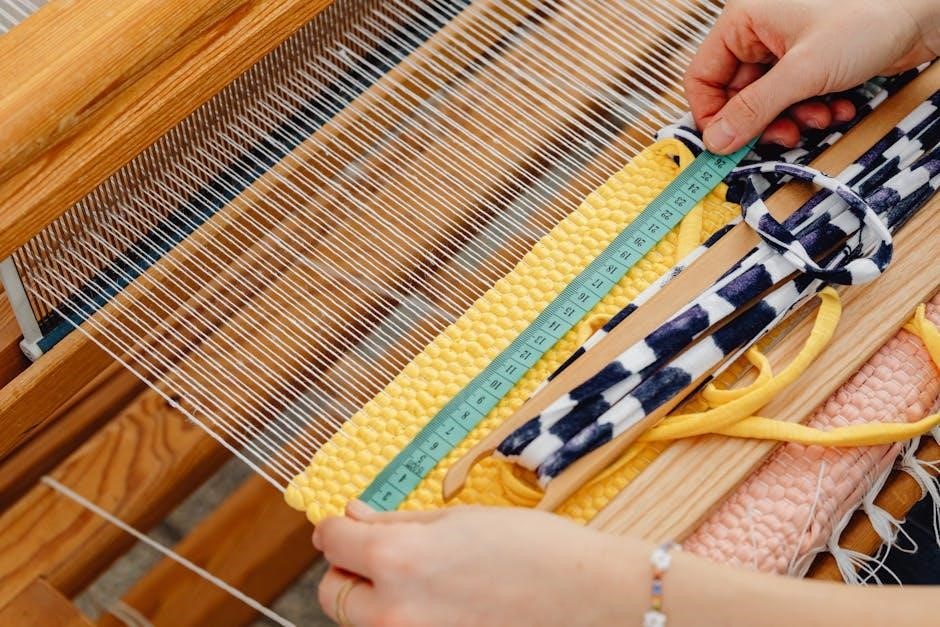Blue Ox Weight Distribution Hitch Manual: A Comprehensive Guide
This guide provides a comprehensive overview of Blue Ox weight distribution hitches․ It covers everything from understanding the basics to installation and unhooking procedures․ Learn how to properly distribute your trailer’s weight and control sway for a safer towing experience․
Understanding Blue Ox Weight Distribution Hitches
Blue Ox weight distribution hitches are designed to improve towing safety and handling by evenly distributing the trailer’s weight across the axles of both the tow vehicle and the trailer․ This reduces stress on the rear axle of the tow vehicle, prevents sagging, and enhances steering and braking performance․
These hitches work by using spring bars to transfer a portion of the trailer’s tongue weight forward to the front axle of the tow vehicle․ This creates a more level ride, improves stability, and minimizes sway․ Blue Ox offers a range of weight distribution hitches, including the SwayPro and TrackPro models, each designed to meet different towing needs and vehicle specifications․ Understanding the principles behind weight distribution is crucial for selecting the right hitch and ensuring proper installation and adjustment․ With a Blue Ox weight distribution hitch, towing becomes a smoother, safer, and more controlled experience․

Types of Blue Ox Weight Distribution Hitches
Blue Ox offers various weight distribution hitches, including the SwayPro, TrackPro, and 2-Point Hitches․ Each type provides unique features and benefits for different towing needs and trailer types, ensuring optimal performance and safety․
SwayPro Weight Distribution Hitch
The Blue Ox SwayPro weight distribution hitch is designed to distribute weight evenly across the axles of the tow vehicle and trailer, enhancing stability and control․ Its unique design ensures continuous sway control, even in adverse weather conditions like rain or snow․ The SwayPro features rotating latches and is available in various tongue weight capacities, ranging from 350 lbs to 1500 lbs, to accommodate different trailer sizes․
Installing the SwayPro involves a straightforward process, detailed in the owner’s manual, which includes instructions for setting up the hitch head, attaching the spring bars, and adjusting the L-brackets․ Regular maintenance and adherence to torque specifications are crucial for optimal performance and safety․ By effectively managing weight distribution and sway, the SwayPro provides a smoother and more secure towing experience․
The SwayPro’s ability to function effectively without interruption, regardless of weather conditions, sets it apart, making it a reliable choice for various towing applications․ Whether you’re towing a camper or a trailer, the SwayPro offers enhanced stability and peace of mind on the road․
TrackPro Weight Distribution Hitch
The Blue Ox TrackPro weight distribution hitch is engineered to provide both weight distribution and sway prevention, offering a comprehensive solution for safer towing․ It effectively manages the weight distribution between the tow vehicle and the trailer, while also actively working to minimize sway․ The installation process begins with proper setup, including ensuring the vehicle and trailer are on level ground․
The hitch head and spring bars are then installed, followed by careful adjustments to ensure optimal weight distribution and sway control․ The TrackPro system incorporates L-brackets that secure against the trailer frame, requiring precise tightening to specified torque specifications․ Regular checks and adjustments are essential to maintain the system’s effectiveness and safety․
Unhooking the TrackPro involves a specific procedure, including using a trailer jack to relieve tension on the spring bars before disconnecting them․ The TrackPro offers a robust solution for those seeking enhanced stability and control while towing, making it a popular choice for various towing needs․
2-Point Hitches
Blue Ox offers 2-point weight distribution hitches as an alternative to their SwayPro and TrackPro models․ These hitches provide a basic level of weight distribution, helping to level the tow vehicle and trailer, enhancing handling, and reducing strain on the vehicle’s rear axle․ While they primarily focus on weight distribution, they may not offer the same level of sway control as the SwayPro or TrackPro systems․
Installation typically involves attaching the hitch to the tow vehicle’s receiver and connecting it to the trailer’s coupler․ The spring bars are then adjusted to transfer weight from the rear of the tow vehicle to the front axle and the trailer axles; Adjustments are crucial to achieve the desired level of weight distribution and ensure a level ride․
Although 2-point hitches are simpler in design and operation compared to more advanced systems, they still require careful setup and adherence to the manufacturer’s instructions․ Regular inspection of all components, including the hitch, spring bars, and connection points, is essential to ensure safe and reliable towing․ These hitches are suitable for those seeking a cost-effective solution for basic weight distribution needs․

Blue Ox TrackPro Installation
Installing the Blue Ox TrackPro hitch requires careful attention to detail․ This section provides a step-by-step guide, covering initial setup, hitch head installation, spring bar attachment, and final adjustments to ensure optimal performance and safety during towing․
Initial Setup and Preparation
Before beginning the TrackPro installation, ensure a safe and level workspace․ Park both your tow vehicle and trailer on a firm, even surface, ideally in a straight line․ If your vehicle has an automatic leveling system or air-ride suspension, consult the vehicle’s owner’s manual for specific setup instructions to prevent any issues during the installation process․
Begin by disconnecting the trailer from the tow vehicle and removing any existing receiver hitch․ This step is crucial for a clean and accurate installation․ Next, insert the TrackPro hitch mount receiver shank into the towing vehicle’s receiver․ Secure it firmly using a 5/8 x 3-inch pin and clip․ This connection forms the foundation for the entire weight distribution system, so it is critical to ensure it is properly secured․
Proper preparation in this initial phase sets the stage for a successful and safe installation of your Blue Ox TrackPro weight distribution hitch․ Taking the time to complete these steps correctly will ensure optimal performance and peace of mind on the road․
Hitch Head and Spring Bar Installation
With the initial setup complete, the next step involves installing the hitch head and spring bars․ Begin by inserting the hitch head/receiver mount assembly into the towing vehicle’s receiver, securing it with the previously installed pin and clip․ Then, carefully couple the hitch head to the trailer, ensuring a secure connection․
Next, take the spring bars and insert them into the pivot tubes located on the hitch head․ Once the spring bars are correctly positioned, secure the L-brackets against the trailer frame․ These L-brackets play a critical role in transferring the weight distribution forces, so make sure they are aligned properly and snugly against the frame․
Following these steps carefully ensures the correct alignment and functionality of the weight distribution system․ Proper installation of the hitch head and spring bars is crucial for effectively distributing the trailer’s weight and minimizing sway during towing․ This will contribute to a smoother, safer, and more controlled towing experience․
Final Adjustments and Torque Specifications
After installing the hitch head, spring bars, and L-brackets, the final adjustments are crucial for optimal performance․ With the vehicle and trailer parked on level ground, carefully assess the weight distribution․ Ensure that the trailer is level and that the tow vehicle is not sagging excessively․ If necessary, adjust the height of the hitch head to achieve a level trailer․
Once the desired weight distribution is achieved, it’s time to tighten all the bolts and brackets to the specified torque specifications․ Consult your Blue Ox TrackPro owner’s manual for the precise torque values for each component․ Using a torque wrench is essential to prevent over-tightening or under-tightening, both of which can compromise the safety and effectiveness of the hitch․
Pay particular attention to the L-bracket bolts, as these bear a significant load․ After the initial tow, it’s wise to re-torque all the bolts to ensure they remain secure․ Regularly inspecting and maintaining the torque of all connections is crucial for safe and reliable towing․ Always confirm that all brackets are tightened to specified torque specs before each tow․

Blue Ox TrackPro Unhooking Procedure
Unhooking the TrackPro requires careful attention to safety․ Park on level ground and use a trailer jack to support the tongue weight․ Disconnect the spring bars and hitch, following the proper sequence to avoid injury․
Preparation and Safety Measures
Before initiating the unhooking procedure for your Blue Ox TrackPro weight distribution hitch, meticulous preparation and adherence to safety measures are paramount․ Begin by ensuring that both the tow vehicle and the trailer are parked on a firm and level surface․ This minimizes the risk of unexpected movement during the process․
Next, and critically, employ a trailer jack to adequately support the trailer’s tongue weight․ This step is crucial as it alleviates tension on the spring bars, making their removal significantly safer and easier․ Failure to properly support the tongue weight can result in sudden release of energy, potentially causing injury or damage to equipment․
Prior to commencing any physical disconnection, carefully inspect the entire hitch assembly for any signs of wear, damage, or corrosion․ Address any identified issues before proceeding․ Lastly, always wear appropriate personal protective equipment, including gloves and eye protection, to safeguard against potential hazards․
Spring Bar and Hitch Disconnection
With the preparation complete and safety measures in place, the disconnection of the spring bars and hitch can proceed․ Begin by removing the locking pin from the L-bracket․ Following this, carefully utilize the provided lift tool to detach the spring bar from the L-bracket on both sides of the trailer․ This action releases the tension that the weight distribution system applies․
Next, proceed to disconnect the spring bars from the hitch head assembly itself․ Once the spring bars are fully detached, uncouple the trailer coupler from the hitch head․ Finally, the entire hitch head/receiver mount assembly can be removed from the receiver tube of the tow vehicle․ Secure the assembly safely․
Throughout this process, exercise extreme caution to avoid any potential injuries․ The spring bars, even when tension is reduced, can still pose a risk if mishandled․ Store all components securely after disconnection․

Sway Control Features in Blue Ox Hitches
Blue Ox hitches are engineered with advanced sway control features to enhance towing safety and stability․ These features are designed to minimize trailer sway, which can be caused by factors such as wind gusts, uneven road surfaces, and sudden maneuvers․ The SwayPro, for example, utilizes a unique design that actively resists sway from the moment you start towing, providing a more stable and controlled experience․
The integrated sway control in Blue Ox hitches works in conjunction with weight distribution to create a balanced and secure towing setup․ By distributing weight evenly across the axles of both the tow vehicle and the trailer, and by actively counteracting sway forces, Blue Ox hitches help to maintain stability and reduce the risk of accidents․ Whether you’re towing a camper, boat, or other trailer, Blue Ox hitches provide peace of mind and improved handling․
